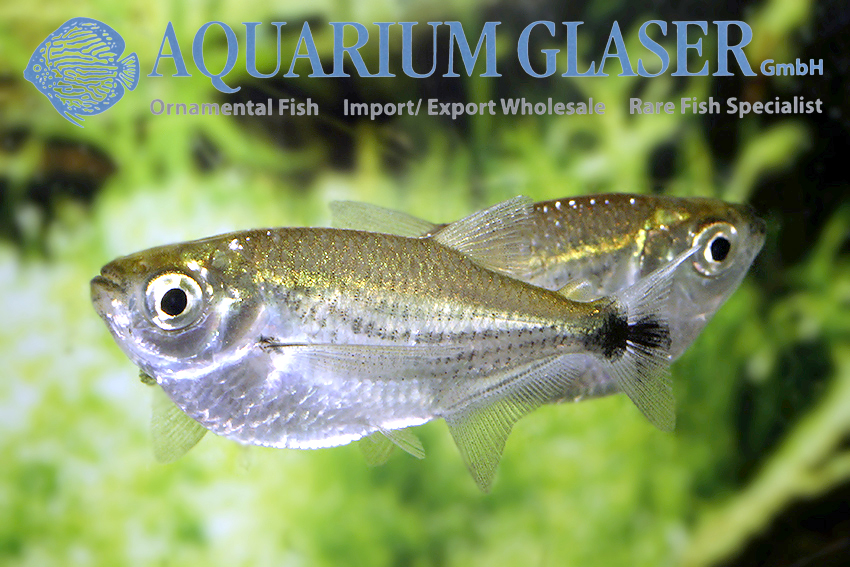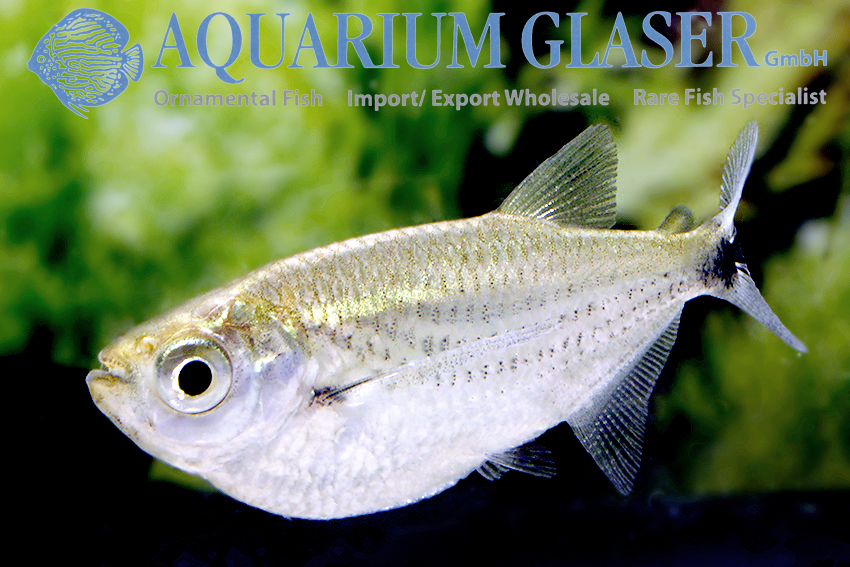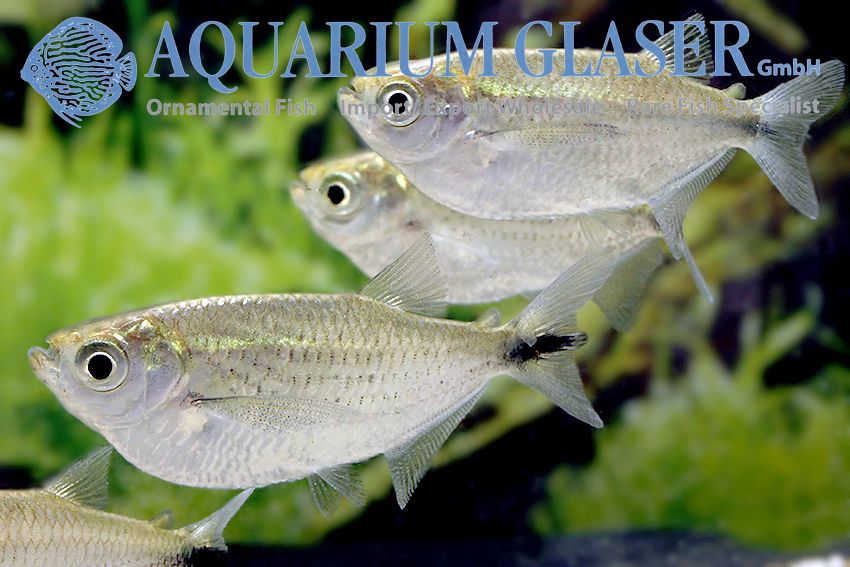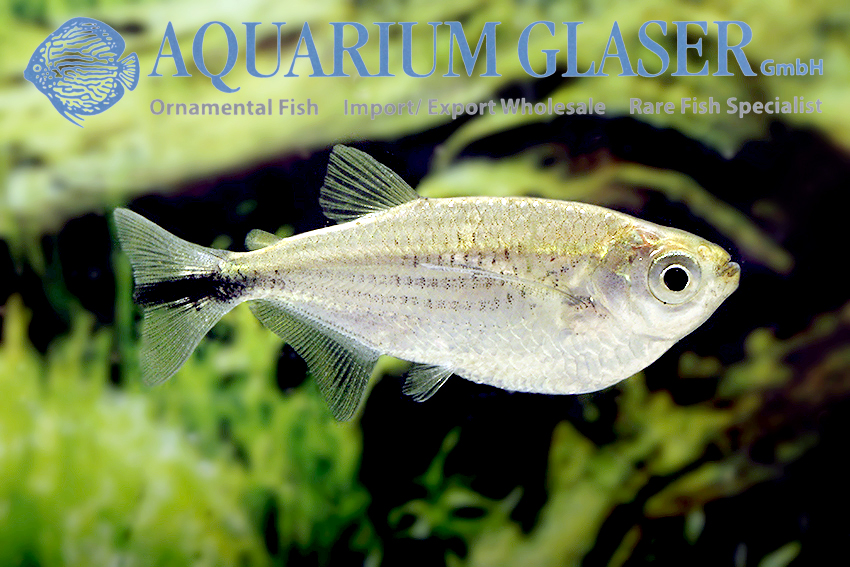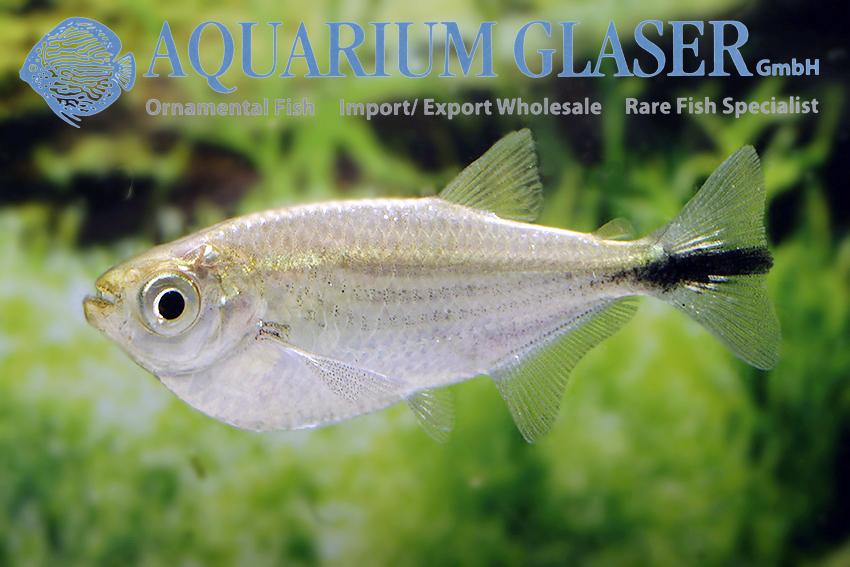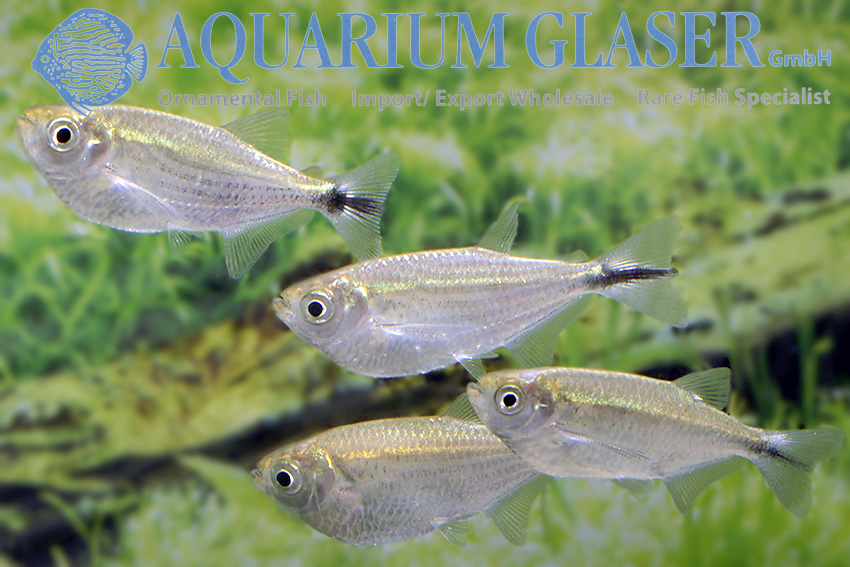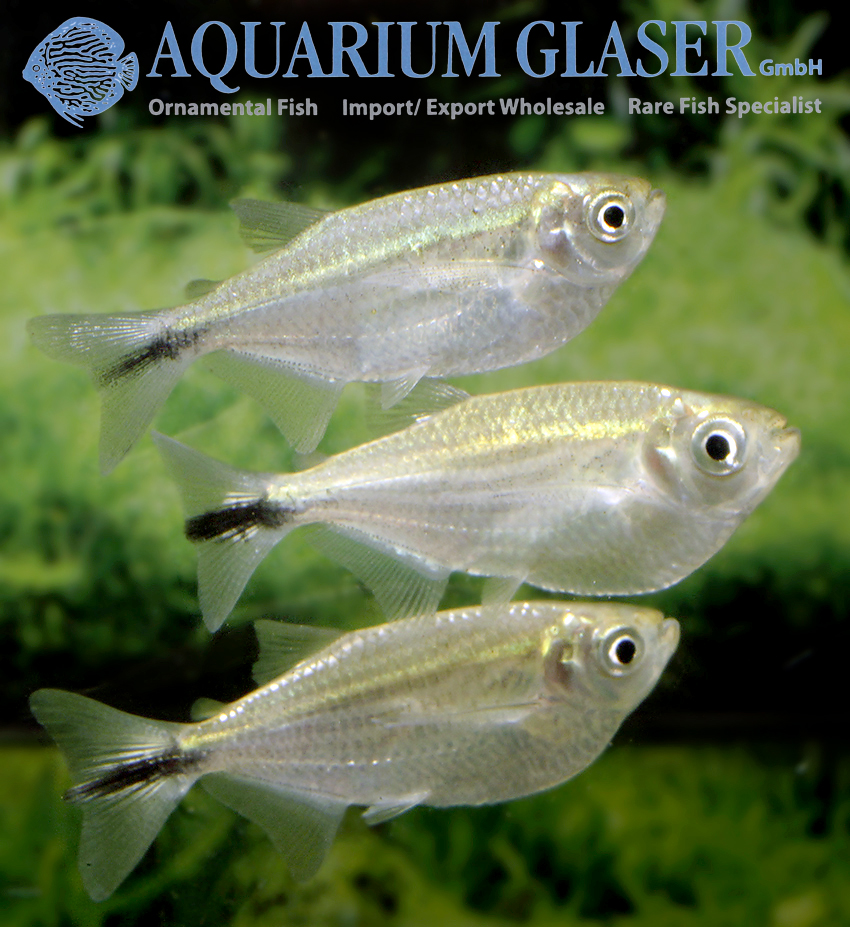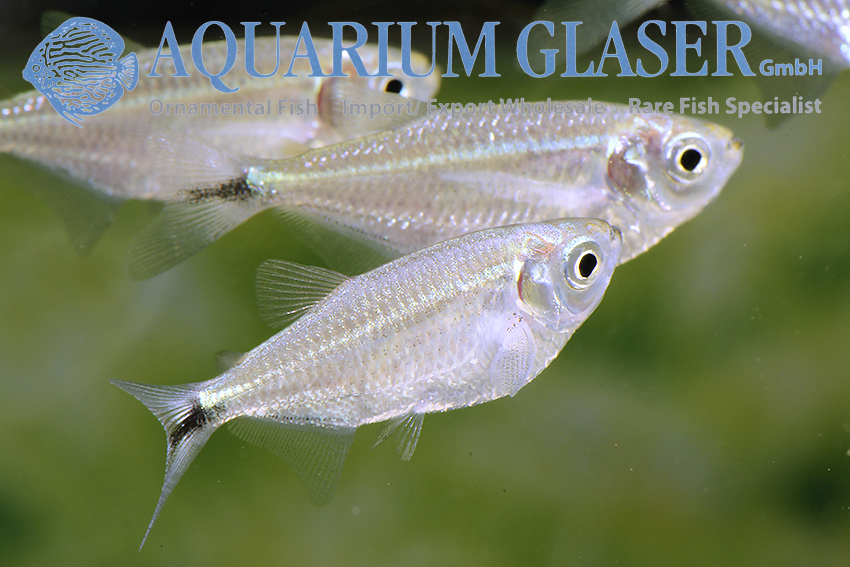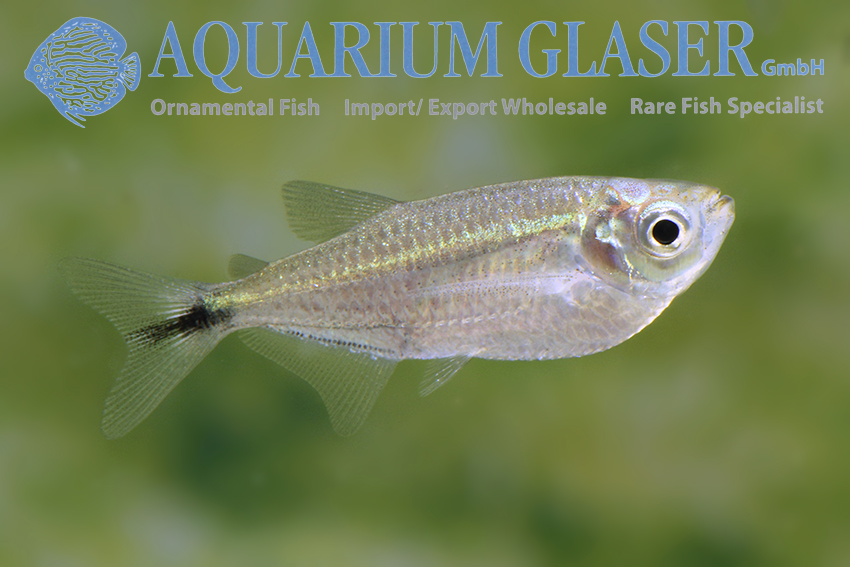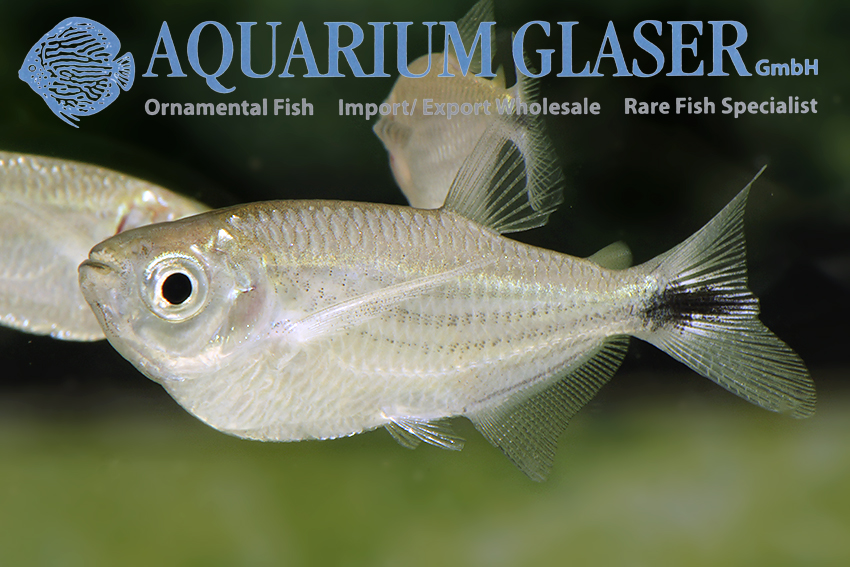The unusual genus Triportheus contains very interesting, somewhat larger species. Depending on the species these fish attain a length of 15-25 cm. Currently 16 species are distinguished that inhabit all major river systems of South America. From time to time we import members of the genus from Paraguay. Two species can be found there, namely T. nematurus and T. pantanensis. Both species can be only told apart for sure by using a method that cannot be observed in live fish: the count of the gill rakers on the first gill arch. However, T. panatanesis is more deep-bodied than T. nematurus (although the measurements that express this overlap to a certain degree). This is why we suppose that our fsh belong to T. nematurus, this view is encouraged by the counts of the lateral scale row and details of the coloration.
T. nematurus becomes about 20 cm long. Like all species of Triportheus it has mighty pectoral muscles. This shows that the tetras – much alike the hatched fishes – jump out of the water when hunted by a predator and „fly“ for a short distance. The way this species feeds is also very interesting. In contrast to most other tetras, which are pickers, Triportheus slurps with many fast openings of the mouth the water surface and swirls small food particles in the mouth by doing so.
As a subtropical species it tolerates a relatively wide temperature range, which can be between 16°C (rarely even less) and 28°C during the season. Regarding the chemical composition of the water, these animals are undemanding, any drinking water is suitable for maintenance.
Breeding in the aquarium has not yet been reported, it has probably never been tried. As far as we know the animals are free spawners without brood care.
Adult narrow hatchetfishes have fold-out skin flaps on their lower lip, with the help of which they can survive in oxygen-poor waters. In such cases, the animals, which live close to the surface anyway, swim just below the water surface and swirl the air with the uppermost layer of water with rapid mouth movements. The skin lobes are able to absorb the oxygen that gets into the water in a way that is usable for the fish.
Triportherus are omnivores; in nature, insects that fall into the water should make up an important part of their diet. In the aquarium they take every usual ornamental fish food, big specimens become dangerous even for small mouth-sized fish.
For our customers: the fish have code 298401 on our stocklist. Please note that we exclusively supply the wholesale trade.
Text & photos: Frank Schäfer





